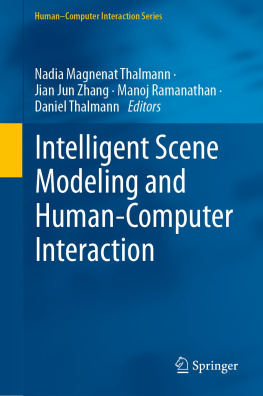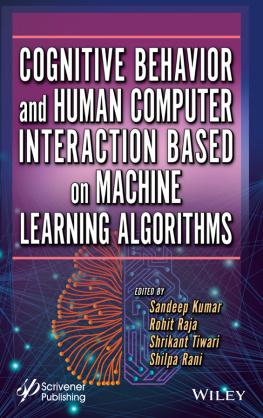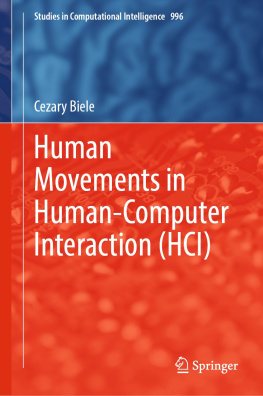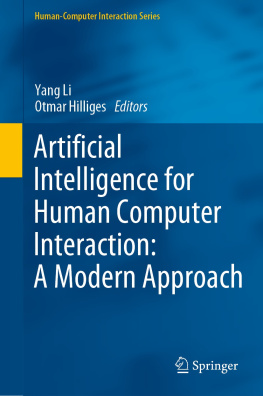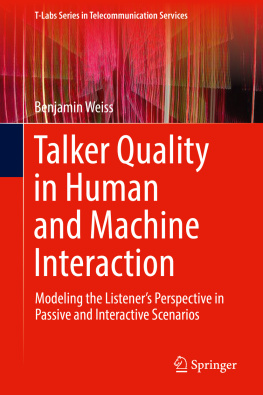Nadia Magnenat Thalmann - Intelligent Scene Modeling and Human-Computer Interaction
Here you can read online Nadia Magnenat Thalmann - Intelligent Scene Modeling and Human-Computer Interaction full text of the book (entire story) in english for free. Download pdf and epub, get meaning, cover and reviews about this ebook. year: 2021, publisher: Springer International Publishing, genre: Home and family. Description of the work, (preface) as well as reviews are available. Best literature library LitArk.com created for fans of good reading and offers a wide selection of genres:
Romance novel
Science fiction
Adventure
Detective
Science
History
Home and family
Prose
Art
Politics
Computer
Non-fiction
Religion
Business
Children
Humor
Choose a favorite category and find really read worthwhile books. Enjoy immersion in the world of imagination, feel the emotions of the characters or learn something new for yourself, make an fascinating discovery.
- Book:Intelligent Scene Modeling and Human-Computer Interaction
- Author:
- Publisher:Springer International Publishing
- Genre:
- Year:2021
- Rating:4 / 5
- Favourites:Add to favourites
- Your mark:
- 80
- 1
- 2
- 3
- 4
- 5
Intelligent Scene Modeling and Human-Computer Interaction: summary, description and annotation
We offer to read an annotation, description, summary or preface (depends on what the author of the book "Intelligent Scene Modeling and Human-Computer Interaction" wrote himself). If you haven't found the necessary information about the book — write in the comments, we will try to find it.
Intelligent Scene Modeling and Human-Computer Interaction — read online for free the complete book (whole text) full work
Below is the text of the book, divided by pages. System saving the place of the last page read, allows you to conveniently read the book "Intelligent Scene Modeling and Human-Computer Interaction" online for free, without having to search again every time where you left off. Put a bookmark, and you can go to the page where you finished reading at any time.
Font size:
Interval:
Bookmark:
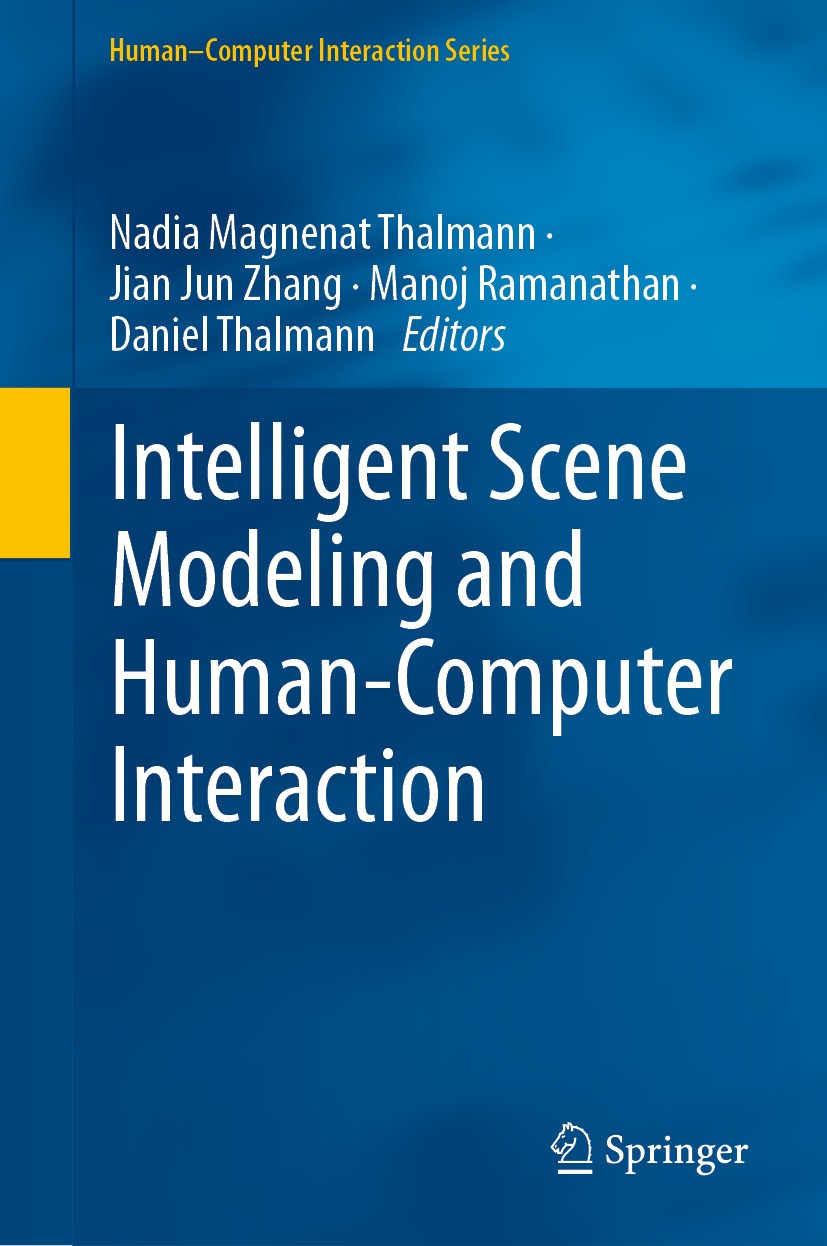
The HumanComputer Interaction Series, launched in 2004, publishes books that advance the science and technology of developing systems which are effective and satisfying for people in a wide variety of contexts. Titles focus on theoretical perspectives (such as formal approaches drawn from a variety of behavioural sciences), practical approaches (such as techniques for effectively integrating user needs in system development), and social issues (such as the determinants of utility, usability and acceptability).
HCI is a multidisciplinary field and focuses on the human aspects in the development of computer technology. As technology becomes increasingly more pervasive the need to take a human-centred approach in the design and development of computer-based systems becomes ever more important.
Titles published within the HumanComputer Interaction Series are included in Thomson Reuters Book Citation Index, The DBLP Computer Science Bibliography and The HCI Bibliography.
More information about this series at http://www.springer.com/series/6033

This Springer imprint is published by the registered company Springer Nature Switzerland AG
The registered company address is: Gewerbestrasse 11, 6330 Cham, Switzerland
Over the years, computers have revolutionised our work, our communication with people, and even our daily life. Recent development of machine learning and deep learning has provided an impetus in all fields. Technological advancements in computer vision, natural language processing and understanding, computer graphics, perception and understanding of environments have invigorated the overall innovation. In this process of technological changes, computers have themselves undergone a significant transformation. At the initial stages, computers were so big in size that they were occupying almost entire rooms, which is in constrast to what they are todaysome are as tiny as a watch. Apart from the conventional laptops or PCs, computers have taken several other forms such as visualization tools, phones, watches, robots, and virtual humans. These new developments have an great impact into two major complementary fields: Intelligent Scene Modeling (ISM) and Human Computer Interaction (HCI). This unique book presents fundamentals and applications in these two fields and their mutual links.
The Part I of this book presents the latest research in Intelligent Scene Modeling (ISM). This part provides several chapters focusing on topics such as perception of 3D scenes, semantic scene modeling, 3D reconstruction of scenes. Starting from indoor environments, which is itself a challenging topic, each chapter increases in complexity with complete 3D building models being semantically modelled. By reading these chapters, one can understand the latest state of the technology, the limitations and how they can be overcome. The book begins with chapters on fundamentals of computer vision methods such as object detection, human action recognition that form blocks for computers and robots. For instance, 3D modeling of a navigation environment is essential for mobile robots. The Intelligent Scene Modeling part is a first prior knowledge for the Human Computer Interaction.
The Part II of this book is focused on Human Computer Interaction (HCI). The new devices have completely transformed the field of HCI. HCI involves three components: perception, processing and inference from any kind of data, whose scope evolves with the advances of the computer technology. Traditionally, the human-computer relationship was simple and basic whereby the user provides data and the computer produces results or new information. Today, the computer not only can take data from the user but can also take them from the environment, the context, and the behavior of the user. The contemporary HCI framework relies on a robust and accurate perception of the environment from the users. Different types of data and signals are used by a computer to analyze the underline contextual significance, such as visual and audio cues, which are essential for reliable perception and understanding of the environment and the tasks to be performed. Millions of people have benefited of face recognition for private and confidential transactions in place of typing passwords. With such a rapid development, it is important for people to understand these methods and the state of the art in HCI.
This book with its two parts offers a comprehensive insight into the 3D modeling and reconstruction and the three components of HCI, perception, processing, and inference of multimodal data such as audio, visual, and none verbal interactions. It provides a closer look at how visual cues are processed. Computer vision and machine learning are vast topics permanent all along the book. They are essential for several applications such as face recognition, emotion recognition and motion detection. They have also transformed other fields including computer graphics and computer animation where huge amounts of images and motion data are analyzed and understood.
Font size:
Interval:
Bookmark:
Similar books «Intelligent Scene Modeling and Human-Computer Interaction»
Look at similar books to Intelligent Scene Modeling and Human-Computer Interaction. We have selected literature similar in name and meaning in the hope of providing readers with more options to find new, interesting, not yet read works.
Discussion, reviews of the book Intelligent Scene Modeling and Human-Computer Interaction and just readers' own opinions. Leave your comments, write what you think about the work, its meaning or the main characters. Specify what exactly you liked and what you didn't like, and why you think so.

